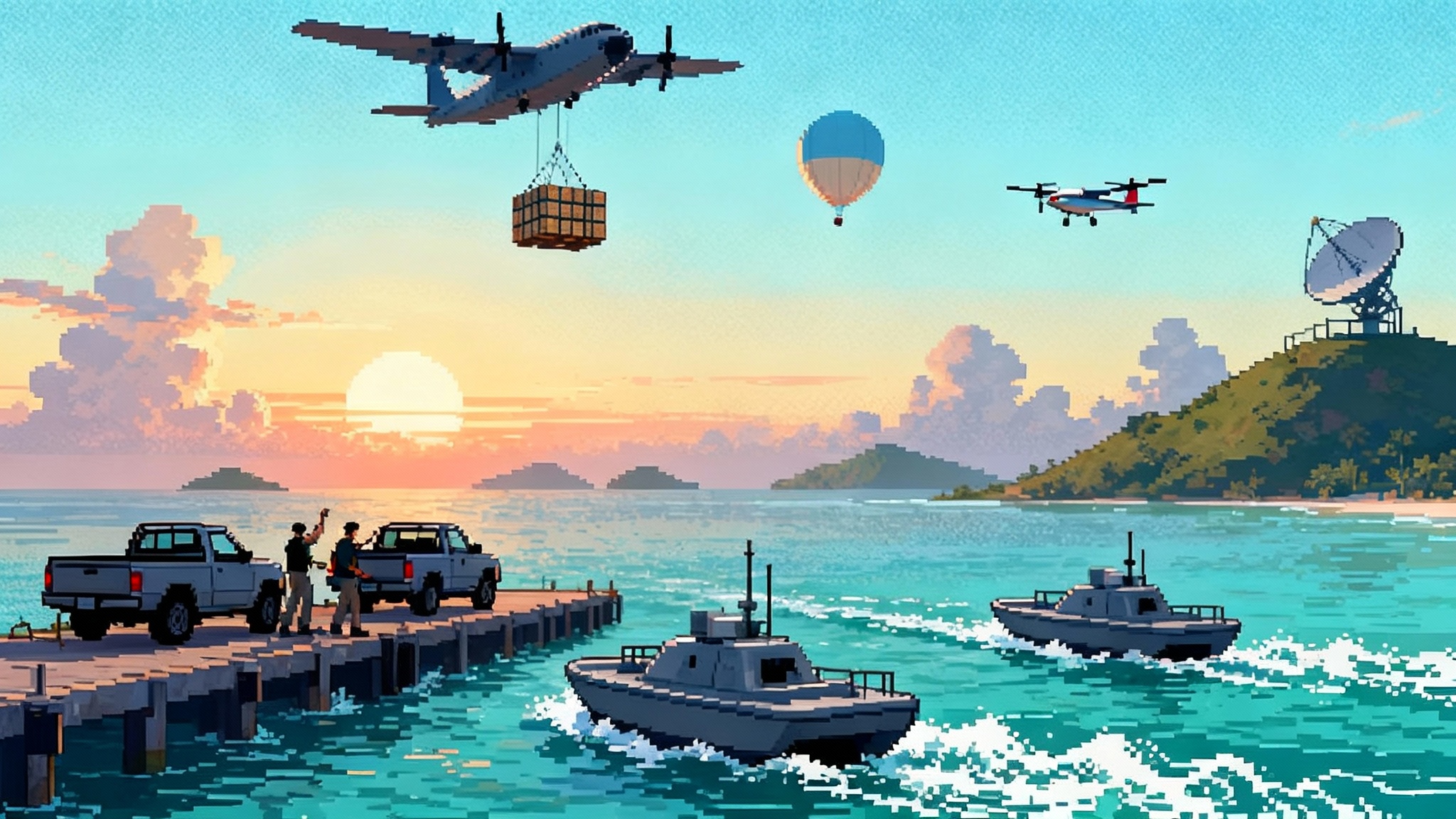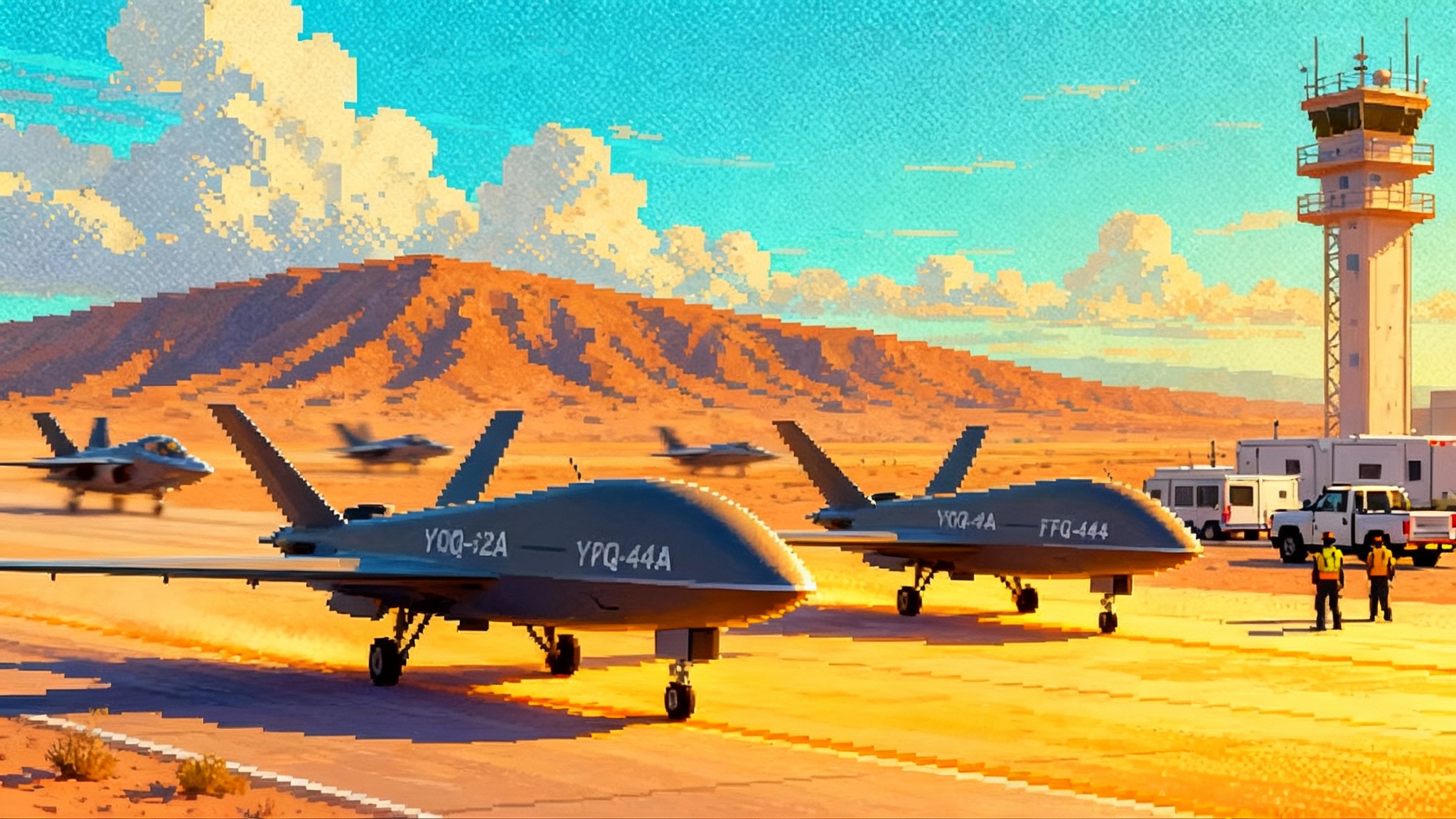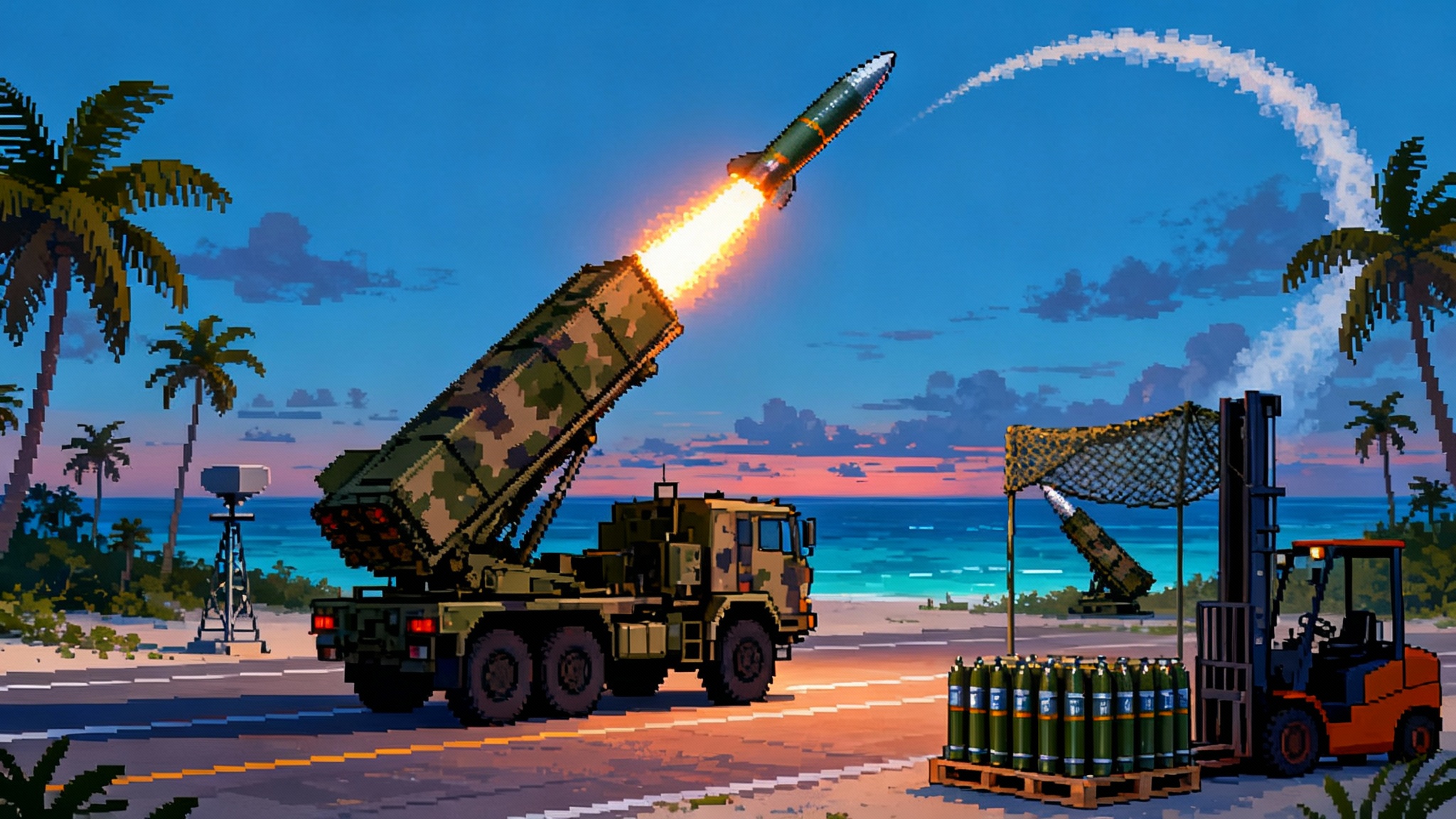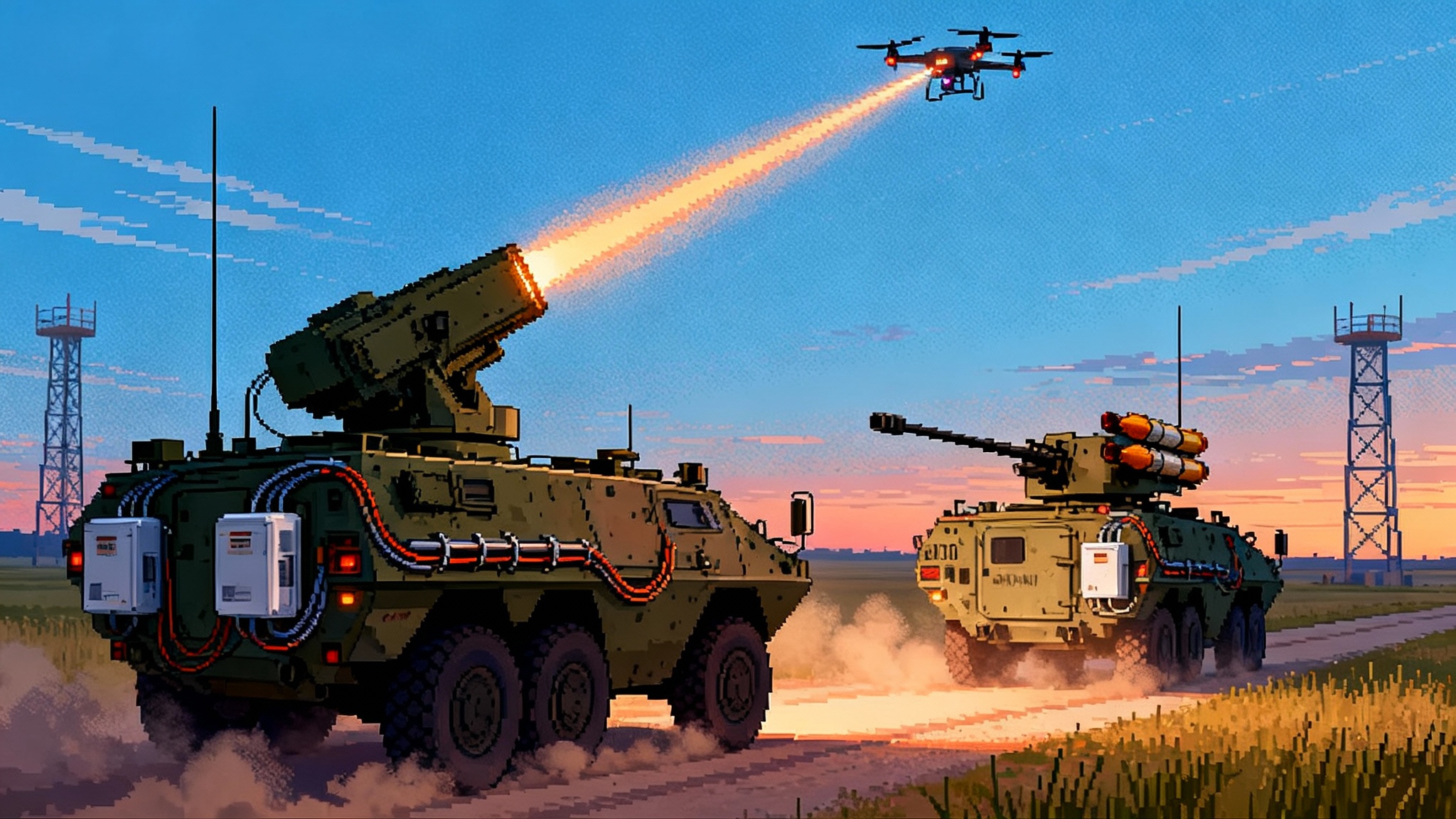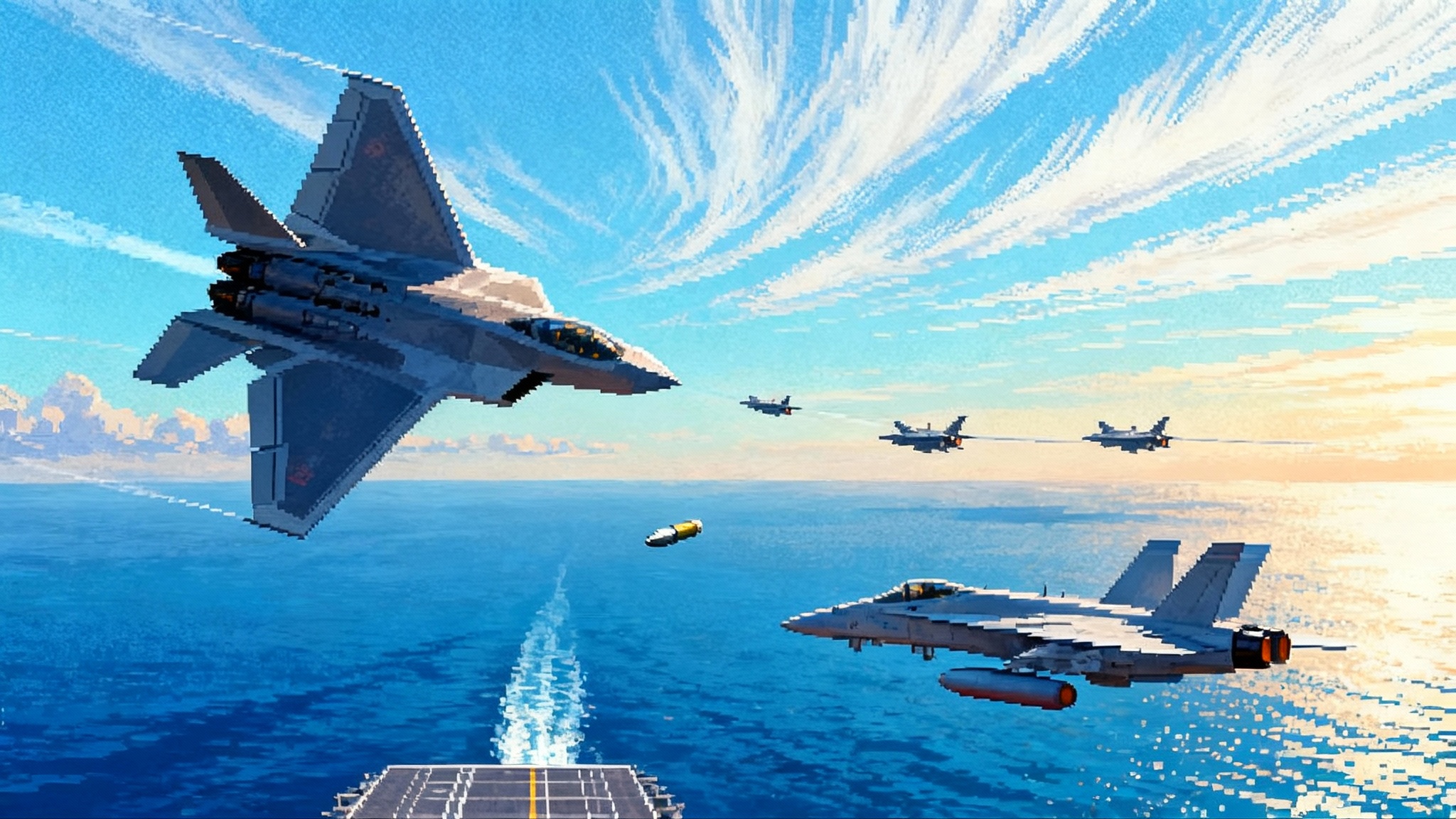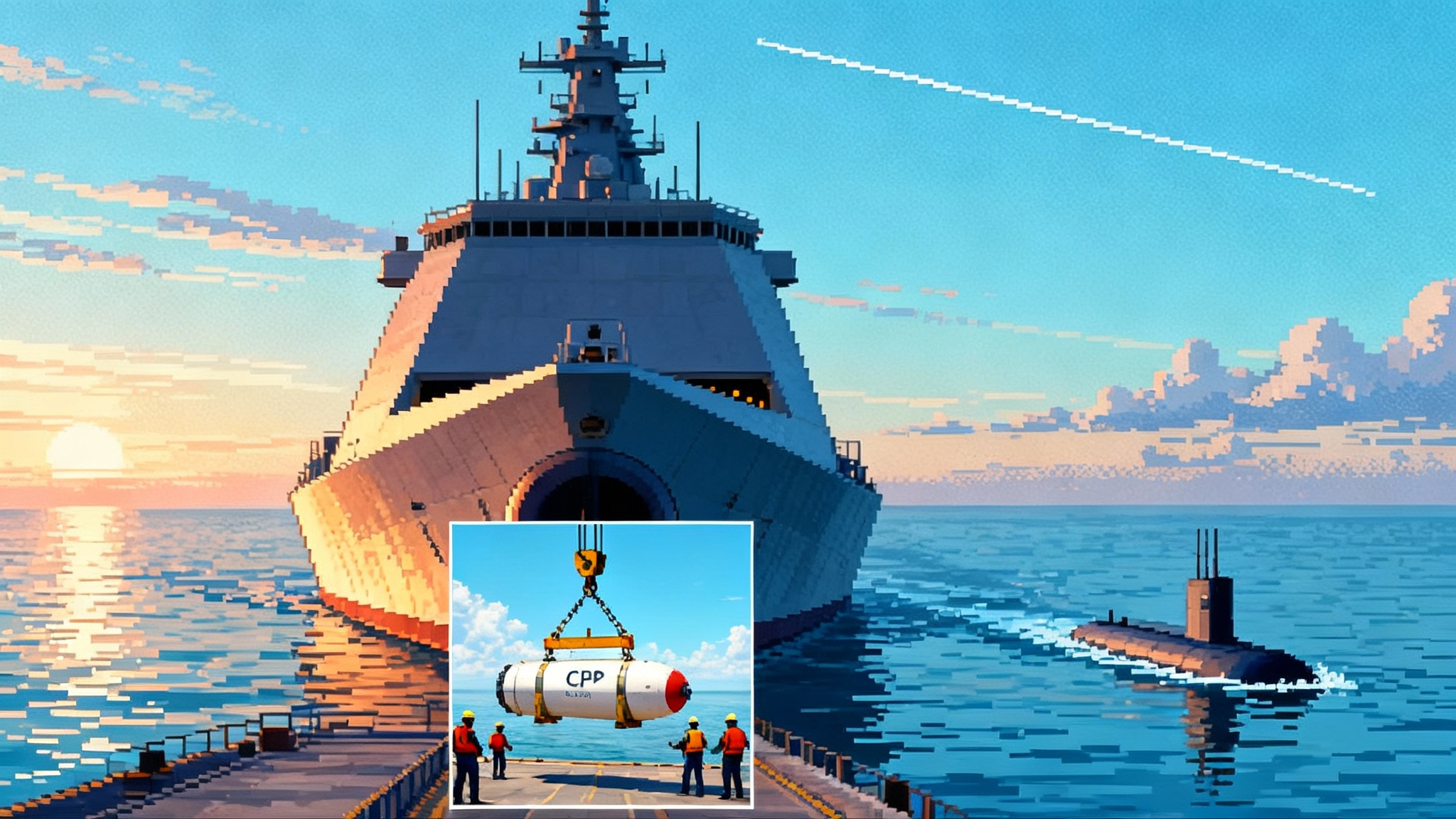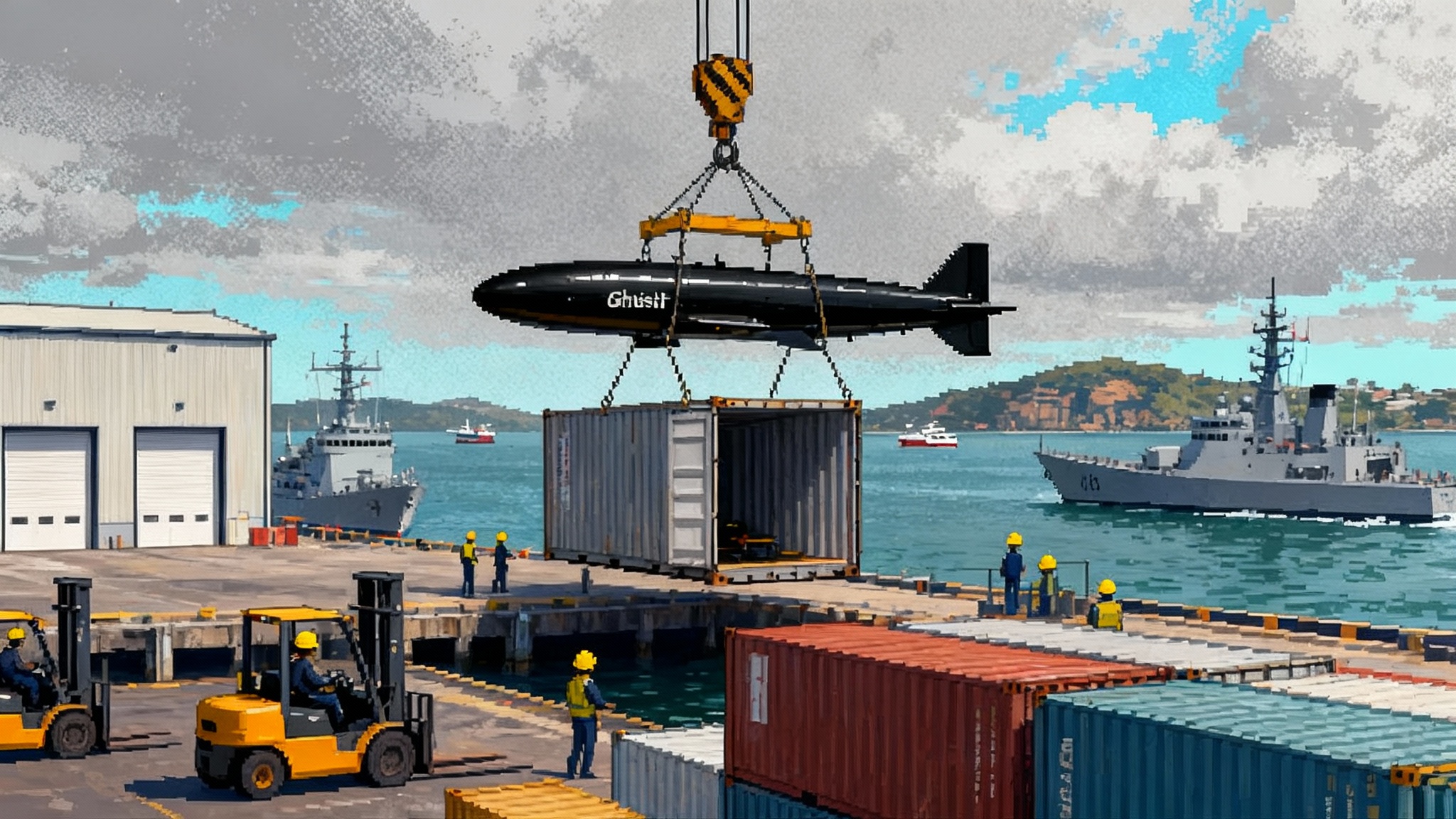AUKUS’ undersea surge: Ghost Shark builds, Orca readies
AUKUS just moved from slides to steel. Australia opens a Ghost Shark production line with deliveries in January 2026 while the United States readies Orca for operational use, reshaping Indo Pacific sea denial with modular, networked autonomy.
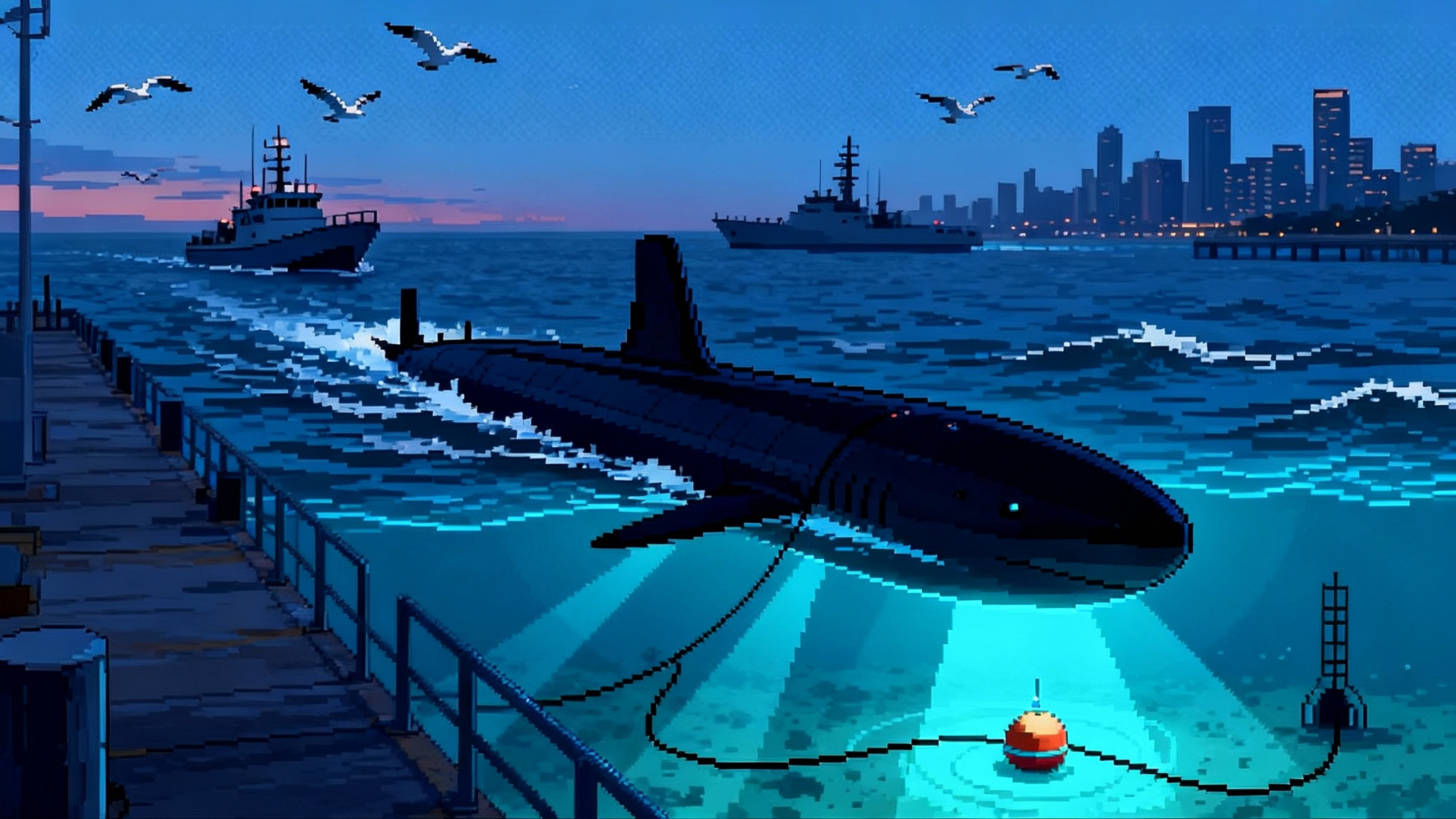
The breakout moment
Walk the floor of Anduril’s new factory in Sydney and you feel what a turning point looks like. Australia has not only finished a prototype cycle, it has opened a production line for Ghost Shark, the extra‑large autonomous underwater vehicle the Royal Australian Navy intends to field in numbers. The government marked the milestone by unveiling the first production vehicle and confirming delivery to the fleet starting in January 2026. The moment is not just an Australian industrial story, it is a signal that AUKUS Pillar II is moving from slides to steel and code. The official announcement put a date on it and framed the goal as scaling quickly from low‑rate production to a real fleet capability. Ministerial remarks at the factory opening captured the urgency and the plan.
On the other side of the Pacific, the United States Navy’s Orca program has been shifting from builder’s trials to Navy developmental and operational testing through the third quarter of fiscal year 2025, with Unmanned Undersea Vehicle Squadron Three preparing for crew certification and early operational employment. Put simply, by late 2025 both programs crossed the line that separates demonstration from use.
Why this matters is straightforward. Australia faces a submarine gap as it transitions to nuclear‑powered boats in the 2030s. Autonomous undersea systems can bridge that gap by providing persistent surveillance, cost‑imposing mine and anti‑ship options, and a way to defend seabed cables and energy infrastructure. Moreover, when a coalition fields dozens of large autonomous subs that can be retasked by software, the economics of sea denial in the Indo‑Pacific shift toward the defender. This complements the push for mass and attritable power described in Replicator mass arrives in the Pacific.
The allied undersea web
Think of the emerging allied force as a web rather than a single platform. Ghost Shark and Orca are not merely vehicles, they are nodes in a network that pairs long‑endurance undersea hulls with surface relay craft, airborne gateways, and shore stations. The value is in the weave. If one node goes dark, others re‑route messages. If a new threat appears, a payload can be swapped and a new mission plan uploaded. Software defines the role. Hardware provides persistence and payload volume.
This web will not erase the need for crewed submarines. It will change how they are used. Crewed boats will spearhead complex missions that demand stealth, judgment, and flexible rules of engagement, while autonomous hulls saturate broad areas, hold chokepoints, and watch the seabed nonstop. A small number of high‑value platforms will be complemented by many lower‑cost, attritable systems that can take risk and accept losses without losing the fight.
Four accelerators that make 2026 to 2027 different
1) Acoustic networking that works in the real ocean
Communicating underwater is hard. Radio signals fade within inches, and light does not travel far. Sound is what makes it through, and the ocean is a noisy, fickle place. The AUKUS partners spent much of 2024 and 2025 tackling this problem in the open ocean, not just in tanks. At Exercise Talisman Sabre 2025, Australia, the United Kingdom, and the United States ran a series called Maritime Big Play to pass tasking and data among autonomous underwater vehicles using standardized acoustic messages. Japan joined as a participant for the first time, an important signal that common approaches are widening. The Australian Department of Defence described how mission control could be transferred across borders in real time and how acoustic links were used to direct an extra‑large autonomous vehicle from thousands of kilometers away. Defence’s account of the trials shows this moving from lab promise to fleet‑relevant practice.
A practical way to understand this is to picture a string of underwater “modems” as a relay race. Each modem listens, decodes, and hands off a short, robust message to the next, slow but steady. A tethered surface buoy or a solar‑powered uncrewed surface craft then bridges the last mile to satellite or line‑of‑sight radios. Latency is measured in seconds, not milliseconds, so the system suits periodic status reports, retasking orders, and autonomous mission updates, not joystick control. That is fine. The vehicles do the driving, the network coordinates the team. Progress in resilient positioning and timing, as reprogrammable GPS enters the fight, will further harden these links.
Why it accelerates adoption: fleets can now plan missions that do not rely on hauling the vehicle back to port for new instructions. Commanders can retask an asset from surveillance to strike support during a single patrol, and they can hand off control between nations without swapping hardware.
2) Modular payloads for strike, ISR, and seabed defense
Ghost Shark and Orca are big for a reason. They carry large, swappable payload sections. Once, a submarine was built for a mission and kept that mission for decades. Now, mission packages can change in days. Consider three concrete payload families:
- Intelligence, surveillance, and reconnaissance. A long towed array or flank arrays for passive acoustic search across a chokepoint, plus electronic support sensors to detect emitters. In clear waters, a synthetic aperture sonar can map the seabed at high resolution to find objects as small as fishing nets or cable clamps.
- Strike support. A buoyant canister that rises to the surface at a time on target and provides a targeting update to maritime strike aircraft or surface ships. In future increments, undersea‑launched loitering munitions or encapsulated missiles could appear, but the near‑term impact comes from cueing and battle damage assessment, not from firing a weapon out of the torpedo room.
- Seabed infrastructure defense. Lightweight autonomous mine countermeasure modules that map critical cable routes, plus small interceptors to investigate and trail intruders. Think of it as neighborhood watch for the seabed. If a suspicious remotely operated vehicle approaches a cable landing, an autonomous guard can shadow it while alerts flow to a command center.
Modularity changes procurement math. Instead of buying one vehicle for each mission, navies buy a common hull and a menu of payloads. This spreads cost across fleets, shortens upgrade cycles, and encourages competitive ecosystems. It also makes exports cleaner. A partner can buy the base vehicle and a starter set of payloads, then add more later without reopening the whole contract.
3) Common control standards with Japan, the United Kingdom, and the United States
AUKUS partners have been hardening a government‑owned common control approach, which is exactly what it sounds like: one operator workstation, one set of mission planning tools, and a growing catalog of vehicles and payloads that plug in without bespoke integrations. During the 2024 and 2025 events, teams used common control technologies to transfer mission authority between nations and to ingest data from multiple national systems into a shared picture. Japan’s participation in 2025 matters because it forces the standard to handle different doctrine and languages, which is how real coalitions fight.
Common control also creates a software marketplace. If Australia writes a better autonomy behavior for mine hunting, the United States can adopt it. If the Navy adds a slick new mission replan tool, the Royal Navy can drop it into their console. The immediate benefit is faster rollouts. The deeper benefit is culture. Decisions move from individual programs to shared, testable code that anyone can improve.
4) Industrial scaling and export pathways
Factories set the pace. Anduril’s Sydney facility was designed from the start for volume, with a supply chain of dozens of Australian firms and a pathway for exports subject to government approvals. That last phrase matters. Pillar II has pushed Australia, the United Kingdom, and the United States to align rules so components, software, and test data can move quickly among partners, while still protecting sensitive technology. As those controls mature, the market grows beyond the three nations.
Scaling also means services, not just hulls. Fleets need refurbishment cycles, spare payloads, batteries, pier‑side containers for launch and recovery, and a cadre of technicians who understand both undersea hydrodynamics and software deployment. Expect regional hubs in Australia and Japan that can turn vehicles around in days, not weeks, with exportable payloads certified against the same standards used by AUKUS navies.
The combined effect is a numbers game. By 2026 to 2027, if Australia receives multiple Ghost Sharks per quarter and the United States completes its initial Orca test sets and moves them into operational experimentation, the Indo‑Pacific could see dozens of large autonomous subs in the water. That mass does not replace nuclear submarines, but it changes the scouting, the timing, and the price of entry for an adversary.
Bridging the submarine gap with software and scale
Australia’s strategic problem is a clock. Nuclear‑powered boats arrive in the 2030s, yet deterrence is needed now. The bridge is a layered undersea system that a middle power can afford and control. Here is what that looks like in practice:
- Persistent pickets in the north. A handful of Ghost Sharks cycle through the archipelagos to Australia’s north, laying passive acoustic lines and reporting contact patterns. They stay on station for weeks, surfacing occasionally near friendly waters to burst transmit through a relay and receive new instructions.
- Smart minefields. Prepositioned encapsulated effectors lie dormant near straits. They wake only when an allied AUV, using an encrypted acoustic handshake, sends the specific trigger conditions. The result is control and accountability, not loose weapons.
- Seabed watch. Autonomous survey missions routinely map priority cable runs and energy infrastructure. The baseline gets sharper every month, so anomalies stand out. When a foreign submersible is detected, an AUV shadows it and streams location updates to a joint operations center for diplomatic or military action as required.
- Cueing for long‑range fires. When an AUV hears a high‑value surface combatant entering a choke point, it sends a time‑late contact update to an aircraft or ship already in range. The undersea node does not need to carry a missile to make a strike more likely to succeed, and it aligns with the urgency after the Navy CPS test starts the clock.
These are not distant hypotheticals. The pieces exist. The breakthroughs of 2024 and 2025 were to make them work together under coalition control and to begin mass production of the vehicles that tie the web together.
What leaders should do next
The technology is moving. Decision makers must now remove the friction that slows operational use.
- Lock in an AUKUS acoustic message standard and publish a controlled specification to trusted partners. Why: without a stable message set, every exercise becomes a one‑off. How: stand up a joint configuration control board under Pillar II, version protocols twice per year, and require any funded payload to pass a conformance test before sea trials.
- Procure payload kits as the unit of account. Why: swapping payloads multiplies fleet utility without multiplying hulls. How: fund three starter kits per hull type in 2026, at least one each for ISR, strike support, and seabed defense, with a fourth slot for experimentation.
- Build a shared mission library. Why: autonomy is behavior. The same code that improved a mine countermeasure search in Jervis Bay should be available for a United States training event in Hawaii. How: host a classified Git service with automated test ranges and red‑team events, and require that any Pillar II mission behavior be submitted under a permissive government license.
- Industrialize turnarounds. Why: persistence is not just endurance, it is the ability to launch again quickly. How: fund two regional service centers by mid‑2026, with containerized test tanks, battery swap lines, and on‑site software deployment teams.
- Clarify export categories for payloads. Why: partners need to buy compatible kits without months of case‑by‑case approvals. How: create named payload families with preapproved export paths, such as “seabed survey pack” or “acoustic picket pack,” and tie them to pre‑cleared suppliers.
Risks and how to cut them down to size
- Acoustic interference and false positives. Shallow, busy waters can fool sonar. Mitigation: fuse acoustic with magnetic and pressure sensors, and require multi‑sensor confirmation before escalating alerts.
- Data exfiltration and spoofing. An adversary will try to mimic acoustic messages or poison mission updates. Mitigation: rotate acoustic keys on a strict schedule, use short‑lived certificates, and require two‑factor cues such as timing patterns that are hard to imitate.
- Lost vehicles. Even reliable AUVs will fail. Mitigation: treat hulls as attritable. Plan for losses by buying more lower‑cost hulls and making data the center of value. Invest in automated search and recovery to salvage sensors and storage when possible.
- Logistics pinch points. Batteries, seals, and specialized parts can ground fleets. Mitigation: stock regional spares, design payloads around common form factors, and certify multiple suppliers early.
- Escalation control. Seabed incidents can escalate quickly. Mitigation: build playbooks that differentiate between surveillance, interference, and attack, and rehearse the legal and diplomatic steps as often as the technical ones.
The economics of sea denial are tilting
For decades, the Indo‑Pacific undersea game rewarded the side that could field the quietest, most capable crewed submarines and the networks to support them. That will remain true. What changes as Ghost Shark enters production and Orca transitions into operational use is the ratio of cost to effect. A modest number of expensive crewed platforms will be backed by a growing population of autonomous nodes that can blanket approaches, watch the seabed every day, and feed the allied kill web with timely, survivable data.
This does not make war more likely. It makes surprise less likely. With better endurance, interoperable control, and payloads you can swap like apps on a phone, the AUKUS and allied undersea force will be harder to blind and harder to box out of key waterways. That is the quiet power of a software‑defined fleet. For a broader view on how scalable autonomy changes the deterrence math, see Replicator mass arrives in the Pacific.
The bottom line
Late 2025 turned the AUKUS undersea vision into a production reality. Australia cut metal on a fleet of Ghost Sharks, and the United States steered Orca through the last phases of test toward operational use. In parallel, the allies proved that acoustic networking, common control, and coalition participation that now includes Japan can work at sea. If leaders double down on standards, payload kits, and industrial scale in 2026, then by 2027 the Indo‑Pacific will be patrolled by dozens of large autonomous submarines working as one web. That web is how Australia bridges its submarine gap, how allies create cost‑imposing sea denial, and how deterrence gets a little more persistent, a little more precise, and a lot more real.
